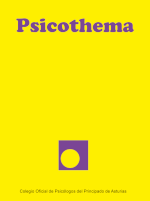Abstract
Objective: Individual risks factors of peer victimization have been widely identified in children and adolescents. However, little is known about how the classroom context may increase or decrease the frequency of victimization. The present short-term prospective longitudinal study used a a person-by-environment approach to examine whether peer perception and social anxiety, along with class social adjustment levels as a moderator, affect the likelihood of peer victimization over time. Method: These effects were modelled using a representative sample of 2,512 Andalusian (Southern Spain) (52% girls) aged 10 to 16 years old (M = 12.81; SD = 1.69 at Wave 1). Classroom social adjustment was assessed by within-classroom standard deviation in social adjustment. Results: Multilevel modeling indicated a negative relationship between peer perception at W1 and peer victimization at W2, as well as a positive association with social anxiety at W1, after controlling for gender, age and victimization at W1. The direct association between peer perception and peer victimization was intensified by class social adjustment. Conclusions: The results provide a more nuanced understanding of the influence of cognitive, emotional, and social variables when trying to address vulnerability to victimization..Downloads
Download data is not yet available.
